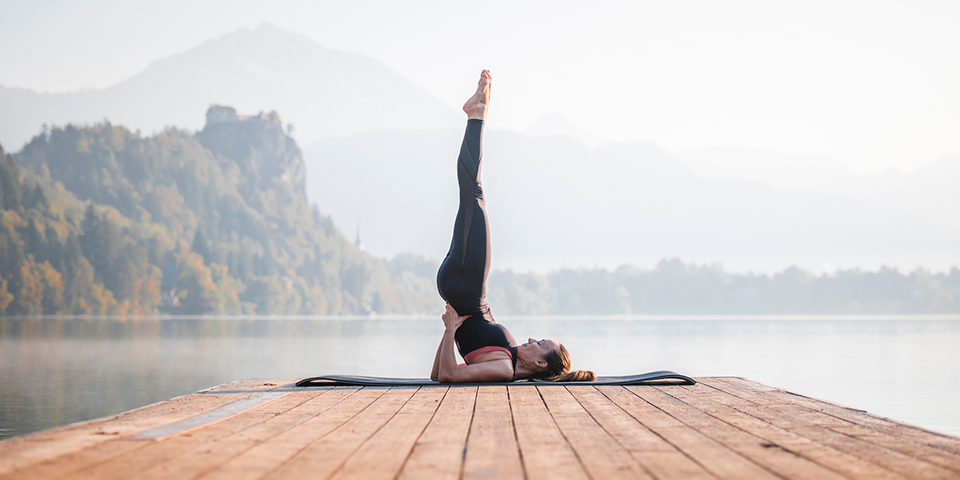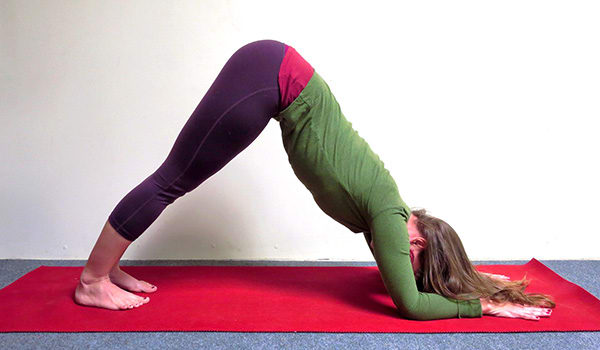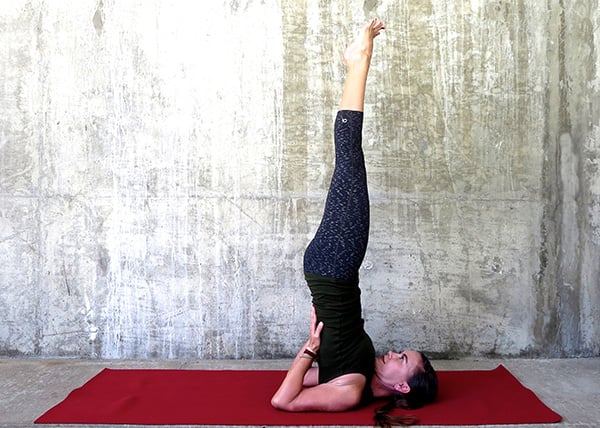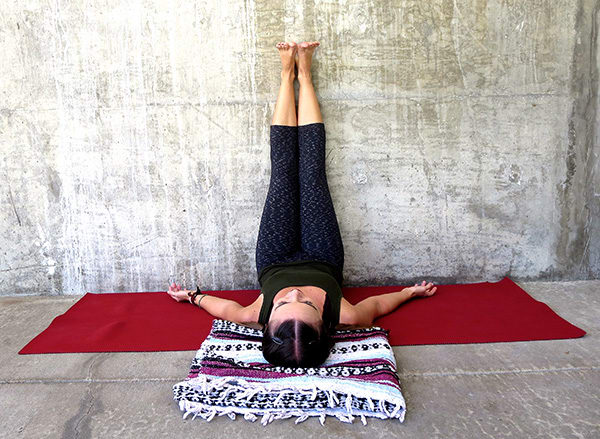4 Easy Inversions for Yoga Beginners

If you’ve scrolled through Instagram recently, you’ve probably seen fitness influencers trying their hand at impressive yoga inversions like headstands and handstands.
But the benefits of inversions aren’t limited to yogis who can balance perfectly still on their head or hands. Any pose where your head is below your heart is considered an inversion, so there are plenty of easier versions to get you started. And apart from looking cool, they’re also a great way to improve your balance, engage your core, and strengthen your upper body.
But before you learn how to do a handstand, it’s important to get comfortable with being upside down. These beginner yoga inversions can help you work your way up to more advanced ones.
1. Downward Dog
If you’ve ever attended a yoga class, it’s likely that you’ve done downward dog pose (or Adho Mukha Svanasana in Sanskrit). Down dog is accessible to most people, and it’s a great way to strengthen your arms, shoulders, upper back, and core to prepare your body for more advanced inversions.
- Start on all fours, with knees below your hips, hands a few inches in front of your shoulders, and fingers pointing towards the front of the room.
- When you’re ready, exhale, lifting your knees off the floor.
- Press the ground away from you, lengthening through your shoulders and broadening your upper back.
- Press your heels towards the floor, straightening your legs as much as is comfortable.
- Pull your belly button in towards your spine and slightly tuck your pelvis to lengthen your lower back.
2. Dolphin
Dolphin pose — which is simply downward dog, but on your forearms — will give you an intense hamstring stretch while also strengthening your shoulders and back.
- Start in a forearm plank with your elbows directly below your shoulders.
- As you exhale, lift your hips and press your heels towards the floor. (It’s ok to bend your knees here, as dolphin can be an intense stretch for your hamstrings and calves.)
- Pull your belly button towards your spine while maintaining a calm, controlled breath.
- Press the ground away and squeeze your elbows towards one another to engage your shoulders and chest. (Try to press your shoulders back, away from your elbows.)
3. Shoulder Stand
The shoulder stand is a bit more challenging than the other moves — it requires a lot of core strength and works your legs, glutes, and core. One word of caution: This yoga inversion also stretches your neck and upper back, so make sure you’ve already warmed up your neck, shoulders, and back before attempting.
- Start by lying on your back with your head on the ground. You can place a folded blanket or towel under your neck and shoulders.
- Curl your knees into your chest, engaging your abs.
- Press your palms to the ground to lift your hips.
- Keeping your elbows on the ground and close to your body, rest your palms against your lower back for support.
- Slowly walk your hands up your back, towards your waist (closer to the floor), which will help you lift your torso higher.
- When you feel comfortable, begin to straighten your legs, reaching your toes towards the ceiling. It’s important to keep back of your head pressed firmly against the floor to protect your neck, and move slowly so you can immediately ease off if you start to feel any pain.
4. Legs Up a Wall
If you’re not ready for shoulder stand, try this gentler alternative: Simply lie on your back with your butt against the wall and your legs extended toward the ceiling. Ideally, you should hold this pose for at least 5 minutes — or 10 to 15 minutes, if you have time — and be mindful of breathing slowly and deeply the whole time.
You can also practice this pose on your mat, without the wall for support, as you work your way up to a shoulder stand.
What Are the Benefits of Yoga Inversions?
“The purpose — and maybe the main benefit — of inversions is that they activate the parasympathetic nervous system, which is what allows us to relax and release stress,” says Yoga52 instructor Brent Laffoon.
Inverted poses can also improve blood flow, increase core strength, build confidence, and give you a new perspective (literally!). Plus they’re fun to try — and even if you’re a beginner, there’s a yoga inversion that’s right for you.








